|
Books Should Be Free Loyal Books Free Public Domain Audiobooks & eBook Downloads |
|
|
Books Should Be Free Loyal Books Free Public Domain Audiobooks & eBook Downloads |
|
Fiction |
|---|
|
Book type:
Sort by:
View by:
|
By: Frances Hodgson Burnett (1849-1924) | |
|---|---|
 Robin
Robin
Starting with a summary of the 1922 novel The Head of the House of Coombe, which followed the relationships between a group of pre-WWI English nobles and commoners, this sequel, called Robin, completes the story of Robin, Lord Coombe, Donal and Feather. (Introduction by Linda Andrus) | |
 Racketty-Packetty House and other stories
Racketty-Packetty House and other stories
This is a collection of short stories and fairy tales by Frances Hodgson Burnett, the author of The Secret Garden and A Little Princess. | |
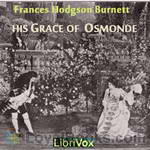 His Grace of Osmonde
His Grace of Osmonde
His Grace of Osmonde, being the portions of that nobleman's life omitted in the relation of his Lady's story presented to the world of fashion under the title of 'A Lady of Quality'Set in late 1600's England, the story follows the life of a woman living an unconventional life. The loves of her life and all of its ups and downs are included. And as above, has more of the story of the Duke who becomes the love of her life. | |
 That Lass O' Lowrie's 1877
That Lass O' Lowrie's 1877
Frances Hodgson Burnett was born and grew up in Manchester, England, and emigrated to the United States with her family at the age of 16. For her first novels, written in Knoxville, Tennessee and published in New York, she drew upon her knowledge of life and speech of the Lancashire working classes. Set in a Lancashire mining town, That Lass o' Lowries is a gritty, and at times brutal, tale of romance across the classes, which stands in stark contrast to her later work. | |
 Sara Crewe: or, What Happened at Miss Minchin’s Boarding School (version 2)
Sara Crewe: or, What Happened at Miss Minchin’s Boarding School (version 2)
Sara Crewe, an exceptionally intelligent and imaginative student at Miss Minchin's Select Seminary for Young Ladies, is devastated when her adored, indulgent father dies. | |
By: Frances Little (1863-1941) | |
|---|---|
 Little Sister Snow (version 2)
Little Sister Snow (version 2)
American author Fannie Caldwell, under pen name of Frances Little, tells the story of young Yuki San growing up in Japan circa early 1900s, and of her dreams of an American. (Introduction by Cheri Gardner) | |
By: Frances Milton Trollope (1779-1863) | |
|---|---|
 Vicar of Wrexhill
Vicar of Wrexhill
A villainous vicar insinuates himself into the life of a wealthy but foolish widow, ruining the fortunes and happiness of her three children, until they begin to fight back. Published in 1837 by the mother of the better-known Anthony Trollope, this highly readable romance portrays the evangelical movement of the Anglican church in a shocking light that may remind readers of some of the religious abuses of the present day. | |
 Life and Adventures of Jonathan Jefferson Whitlaw
Life and Adventures of Jonathan Jefferson Whitlaw
The novel begins with the arrival of a family staking a claim in the black delta of the Deep South. Whitlaw is a brutish sort who bullies his cowering wife into working herself to death. Shortly after giving birth to a strapping man-child, the wife, Portia, dutifully dies. Her sister-in-law, Clio, takes over the responsibilities of raising the young Whitlaw and tending to every need and whim of her brother. Jonathan Jefferson grows up to be shrewd, conniving, and sly, driven – as Trollope thought most Americans were – by a compulsion for financial success... | |
 Life and Adventures of Michael Armstrong, the Factory Boy
Life and Adventures of Michael Armstrong, the Factory Boy
The industrial revolution led to the rise of manufacture and, thus, the cotton mill factories. This important novel tells about the plight of Michael Armstrong, one of the boys who is forced to work there. The aim of the novel was to expose the public to the conditions of thousands of "infant labourers" around the northern mill towns. The novel drew much criticism, of course. Yet, nonetheless, it is a forgotten masterpiece, perfect for fans of Oliver Twist and North and South. It is a brave novel, full of truth and honesty, yet probably not for the faint of heart. - Summary by Stav Nisser. | |
 Widow Barnaby
Widow Barnaby
The vain, flirtatious and presumptuous husband hunting Mrs. Barnaby delves into high-class society of which she knows very little leading to some rather awkward and moments and ridiculous mistakes. Add the love and distresses of her lovely and demure niece Agnes, Mrs. Trollope's sharp wit, and you have the perfect recipe for a lighthearted Victorian romance. | |
 Widow Married: A Sequel to The Widow Barnaby
Widow Married: A Sequel to The Widow Barnaby
EXCERPT: The existence of Mrs. Barnaby , the existence of Mrs. Barnaby, up to the hour in which she pledged her vows to Major Allen, before the altar of the principal church in Sydney, had, on the whole, been a very happy one. She had, in fact, very keenly enjoyed many things, which persons less fortunately constituted might have considered as misfortunes and to the amiable and well-disposed reader a continuation of the history of such a mind can hardly fail of being useful as an encouragement and example. | |
By: Frances Trego Montgomery (1858-1925) | |
|---|---|
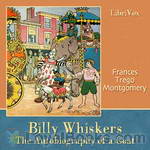 Billy Whiskers, the Autobiography of a Goat
Billy Whiskers, the Autobiography of a Goat
This delightful children's story can be enjoyed by kids and adults alike! A mischievous goat, Billy Whiskers, gets into trouble so often that the book could be named, "Billy Trouble Whiskers"! This humorous story will bring you many chuckles and give you a chance to get lost in Billy's adventures with childlike enthusiasm. From riding in a police car, to being a firehouse mascot, getting married, and finding himself a circus goat, Billy's adventures will certainly keep you entertained! (Introduction by Allyson Hester) | |
 Zip, the Adventures of a Frisky Fox Terrier
Zip, the Adventures of a Frisky Fox Terrier
Zip, a little fox terrier, lives in the town of Maplewood in the house of his owner, Dr. Elsworth. Each day when Dr. Elsworth drives his carriage to visit his patients, Zip goes along with him so that he can keep the doctor company and, most importantly, visit with the other animals in the town. Zip likes to find out all the latest news so that he can tell it to his best friend, Tabby the cat, who also lives with Dr. Elsworth. However, he also finds himself getting into mischief, whether it's trying to solve a burglary, sneaking fried chicken from a picnic, getting stuck in a stovepipe or fighting with Peter-Kins the monkey. Zip is one dog who never has a dull day. | |
By: Frances Trollope (1779-1863) | |
|---|---|
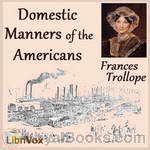 Domestic Manners of the Americans
Domestic Manners of the Americans
Next to de Alexis de Tocquville's almost contemporary Democracy in America, Frances Trollope's work may be the most famous (or at least notorious) dissection of manners and morals of the United States. The work was a sensation on both sides of the Atlantic, and particularly in America, where Trollope was reviled as representing the worst of old world prejudices the new republic (though the criticism did nothing to hurt sales).Accompanied by a son and two daughters, Trollope lived in the United States... | |
By: Francis Bacon (1561-1626) | |
|---|---|
 The Essays of Francis Bacon
The Essays of Francis Bacon
Among the many ideas explored in this book are beauty, gardens, honor and reputation, cunning, nobility, friendship and many others. Authored by the man who is credited with having invented the essay form in English, The Essays of Francis Bacon was written over an extended period, ranging from the mid sixteenth century. They were compiled in a single edition in 1597 and later re-written, enlarged and added to in other editions in 1612 and 1625. However, their compelling and insightful quality still appears fresh and appealing to modern day readers... | |
By: Francis Brett Young (1884-1954) | |
|---|---|
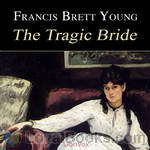 The Tragic Bride
The Tragic Bride
The story centers on Gabrielle Hewish, only and lonely child of Sir Jocelyn Hewish, a loveable lush and owner of the peaceful Roscarna estate nestled in the Irish countryside. In due course, young Gabrielle falls in love with a Navy man whose untimely demise sends her into a depression, and the consequences of which alter her future, culminating in a fascinating and quite unpredictable relationship with Mrs. Payne and her troubled son Arthur. A story of understanding in it’s finest sense and aptly titled, The Tragic Bride is both interesting as a story and telling as a character study. | |
By: Francis Coventry (1725-1754 or 1759) | |
|---|---|
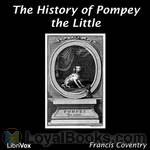 The History of Pompey the Little
The History of Pompey the Little
"Pompey, the son of Julio and Phyllis, was born A.D. 1735, at Bologna in Italy, a place famous for lap-dogs and sausages." At an early age he was carried away from the boudoir of his Italian mistress by Hillario, an English gentleman illustrious for his gallantries, who brought him to London.The rest of the history is really a chain of social episodes, each closed by the incident that Pompey becomes the property of some fresh person. In this way we find ourselves in a dozen successive scenes, each strongly contrasted with the others... | |
By: Francis Godwin (1562-1633) | |
|---|---|
 The Man in the Moone
The Man in the Moone
A self-serving Spaniard discovers a means of traveling to the moon, describing his sensations in transit in terms remarkably consistent with modern astronauts' experiences. He finds on the moon a utopia, which he describes in detail, but being a fallen creature, he takes the first opportunity of coming home. ( | |
By: Francis J. Finn (1859-1928) | |
|---|---|
 The Fairy of the Snows
The Fairy of the Snows
Have you seen a human fairy? Meet Alice Morrow, the dainty fairy of the snows, who will dance her way right into your heart! Get ready to laugh and cry as you follow the antics and trials of the Morrow family, living in early 20th Century Cincinnati. (Introduction by Anne Elizabeth) | |
 Tom Playfair; or Making a Start
Tom Playfair; or Making a Start
Tom Playfair; Or Making a Start is a book by a Roman Catholic priest, originally published in 1890, and written for youth ages 9-12.The story opens with 10-year-old Tom Playfair being quite a handful for his well-meaning but soft-hearted aunt. (Tom's mother has died.) Mr. Playfair decides to ship his son off to St. Maure's boarding school — an all-boys academy run by Jesuits — to shape him up, as well as to help him make a good preparation for his upcoming First Communion. Tom is less than enthusiastic, but his adventures are just about to begin: life at St. Maure's will not be dull. | |
 But Thy Love and Thy Grace
But Thy Love and Thy Grace
Father Finn's beautiful little tale can be read in an hour or so, but it conveys a lesson which ought to be of longer duration. The interest of the story is chiefly theological, turning, as it does, on the refining and ennobling effects of frequent confession and communion on the soul; yet it is so simply put that any child can understand it.Regina O'Connell is a poor factory girl whose earnings support herself and her bedridden sister. She is simplicity itself—one of those rare beings whom unselfishness and genuine humility make heroines in the true sense of the word... | |
 His First and Last Appearance
His First and Last Appearance
The scene of the story is laid partly in Milwaukee, partly in New York. It describes the trials of the orphaned Lachance children. The boy hero is of a loving and lovable disposition and wins the hearts of all. The author has combined pathetic incidents with religious consolations, and gives zest to the whole by diffusing his genial humor throughout.From the author of Tom Playfair, Percy Wynn, But Thy Love and thy Grace, and many more. | |
By: Francis Lovell Coombs | |
|---|---|
 The Young Railroaders
The Young Railroaders
While aimed at youths, this series of tales of the just-opening West makes a rollicking good story for adults, too. Three teen-age boys, trained as telegraphers, manage to get themselves in and out of a wide variety of harrowing circumstances. Using their knowledge of Morse code, the science of telegraphs, and the operation of railroads, the boys stir in native resourcefulness, quick-thinking, and when the occasion demands it, raw courage – to effect rescues, thwart thieves, and solve mysteries. If Tom Swift had lived in the nineteenth century, he could not have had more exciting escapades! | |
By: Francis Pharcellus Church (1839-1906) | |
|---|---|
 Yes, Virginia, There Is A Santa Claus
Yes, Virginia, There Is A Santa Claus
“Is There A Santa Claus?” was the headline that appeared over an editorial in the September 21, 1897 edition of the New York Sun. The editorial, which included the response of “Yes, Virginia, There is a Santa Claus,” has become an indelible part of popular Christmas lore in the United States. | |
By: Francis William Bourdillon (1844-1912) | |
|---|---|
 Aucassin and Nicolette.
Aucassin and Nicolette.
Aucassin and Nicolette is a medieval romance written in a combination of prose and verse called a “song-story.” Created probably in the early 13th century by an unknown French author, the work deals with the love between the son of a count and a Saracen slave girl who has been converted to Christianity and adopted by a viscount. Since Aucassin’s father is strongly opposed to their marriage, the two lovers must endure imprisonment, flight, separation in foreign lands, and many other ordeals before their ardent love and fierce determination finally bring them back together... | |
 Lost God
Lost God
The first-century scholar and historian Plutarch tells a strange tale of sailors at sea, who heard a mysterious voice proclaiming: "Pan is dead." This narrative poem tells the story of another Greek who sees the funeral of Pan in a vision and is launched on a quest to find the meaning of his vision. His journey eventually leads him all the way to Jerusalem and back, before he finds the answer he is searching for. - Summary by Devorah AllenLeander: MozartjrHelen: Krista ZaleskiPhilo: Larry WilsonPasserby: Kerry AdamsNarrator: Devorah Allen | |
By: François Rabelais (1483-1553) | |
|---|---|
 Gargantua and Pantagruel
Gargantua and Pantagruel
The Life of Gargantua and of Pantagruel (in French, La vie de Gargantua et de Pantagruel) is a connected series of five novels written in the 16th century by François Rabelais. It is the story of two giants, a father (Gargantua) and his son (Pantagruel) and their adventures, written in an amusing, extravagant, satirical vein. There is much crudity and scatological humor as well as a large amount of violence. Long lists of vulgar insults fill several chapters. | |
 Gargantua and Pantagruel, Book III
Gargantua and Pantagruel, Book III
The five-volume work chronicling the adventures of father Gargantua and son Pantagruel is a vehicle for Rabelais' satire of sixteenth-century European society. It is lively, outrageous, and, at times, bawdy. This the third of the five volumes--all are translated by Thomas Urquhart and Peter Motteux | |
By: Frank Froest (1858-1930) | |
|---|---|
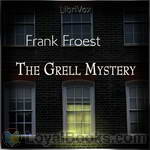 The Grell Mystery
The Grell Mystery
Mr Robert Grell, millionaire and socialite, is found murdered in his study on a stormy evening. It’s up to Heldon Foyle, the detective, to unravel the mystery. | |
By: Frank Gee Patchin | |
|---|---|
 The Pony Rider Boys in the Rockies
The Pony Rider Boys in the Rockies
The Pony Rider Boys in the Rockies is the first book in the 12 part series by Frank Gee Patchin. | |
 The Pony Rider Boys in Texas
The Pony Rider Boys in Texas
Yee-hawww! The Pony Rider Boys are on the trail again! In the second book of this series, Professor Zepplin has taken the young men to San Diego, Texas, to experience the life of a cowboy. The cattle drive will take them across the great state of Texas, where they will meet many dangers and adventures. | |
 The Pony Rider Boys in Montana
The Pony Rider Boys in Montana
Yee-Haaw! The Pony Rider Boys are on the move again! In this book, the 3rd of the series, the boys have decided that they want to explore the north country. They also want to make their own arrangements for the adventure, with the approval of Professor Zepplin, of course! So they have arrived in Forsythe, Montana, to try their luck in the mountains. | |